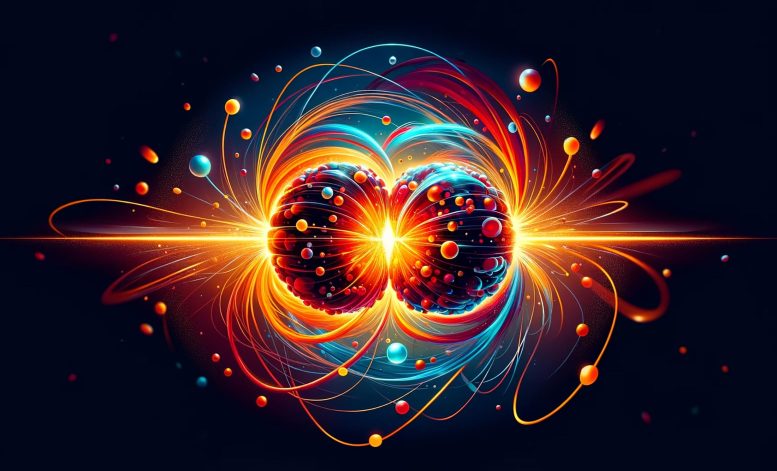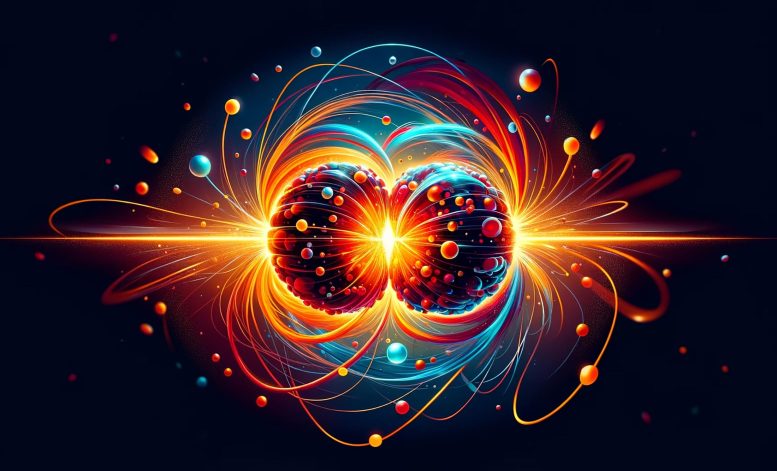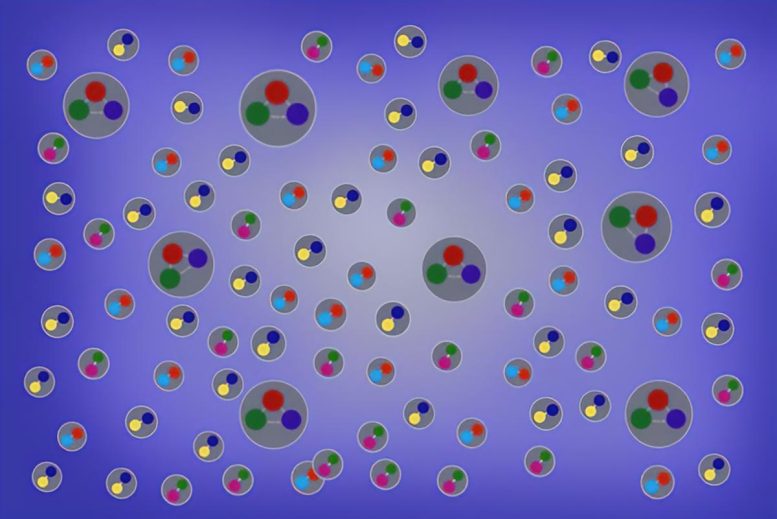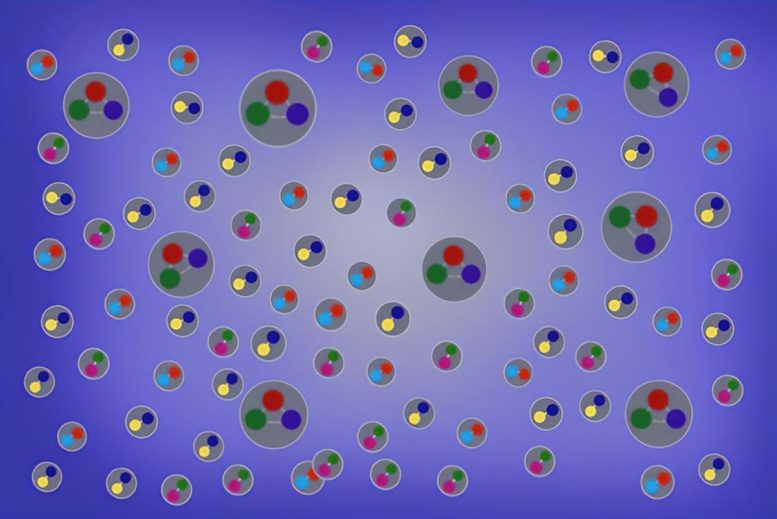By


Quark gluon plasma (QGP) is a unique state of matter produced by colliding heavy nuclei in laboratories, leading to the creation of a QGP fireball. This fireball undergoes expansion and cooling, eventually forming subatomic particles that are key to understanding QGP. New research using the maximum entropy principle has led to advancements in understanding the transition from QGP to hadronized states and identifying critical points in quantum chromodynamics. Credit: SciTechDaily.com
Scientists create quark gluon plasma (QGP) in labs to understand its transition to hadrons and its role in quantum chromodynamics, using new methods like the maximum entropy principle to interpret experimental data and map the QCD phase diagram.
Introduction to Quark Gluon Plasma (QGP)
Quark gluon plasma (QGP) is an exciting state of matter that scientists create in a laboratory by colliding two heavy nuclei. These collisions produce a QGP fireball. The fireball expands and cools following the laws of hydrodynamics, which govern how fluids behave in various conditions.
Eventually, subatomic particles (protons, pions, and other hadrons, or particles made up of two or more quarks) emerge and are observed and counted by detectors surrounding the collision. Fluctuations in the number of these particles from collision to collision carry important information about the QGP.
However, extracting this information from what scientists can observe is a difficult task. An approach called the maximum entropy principle provides a crucial connection between these experimental observations and the hydrodynamics of the QGP fireball.


A cartoon of free-streaming hadrons emerging from quark-gluon plasma. Credit: Maneesha Sushama Pradeep
Hadronization and New Research
As a QGP fireball expands and cools, it eventually becomes too diluted to be described by hydrodynamics. At this stage, the QGP has “hadronized.” This means its energy and other quantum properties are carried by hadrons. These are subatomic particles such as protons, neutrons, and pions that are made up of quarks. The hadrons “freeze-out”—they freeze information about the final hydrodynamic state of the QGP fireball, allowing the particles streaming from the collision to carry this information to the detectors in an experiment.
New research provides a tool for using simulations to compute observable fluctuations in the QGP. This allowed the researchers to use freeze out to identify hints of a critical point between a QGP fireball and a gaseous hadronized state. This critical point is one of scientists’ unresolved questions about quantum chromodynamics, the theory of the strong gluon-driven interactions between quarks.
Experimental Implications and the Maximum Entropy Principle
Fluctuations in the QGP carry information about the region of the QCD phase diagram where the collisions “freeze out.” This makes connecting fluctuations in hydrodynamics to fluctuations of the observed hadrons a crucial step in translating experimental measurements into the map of the QCD phase diagram. Large event-by-event fluctuations are telltale experimental signatures of the critical point.
Data from the Run-I Beam Energy Scan (BES) program at the Relativistic Heavy-Ion Collider (RHIC) hint at the presence of the critical point. To follow this hint, researchers at the University of Illinois, Chicago proposed a novel and universal approach to converting hydrodynamic fluctuations into fluctuations of hadron multiplicities.
The approach elegantly overcomes challenges faced by previous attempts to solve this problem. Crucially, the new approach based on the maximum-entropy principle preserves all the information about the fluctuations of conserved quantities described by hydrodynamics.
The novel freeze-out procedure will find applications in the theoretical calculations of event-by-event fluctuations and correlations observed in experiments such as the Beam Energy Scan program at RHIC aimed at mapping the QCD phase diagram.
Reference: “Maximum Entropy Freeze-Out of Hydrodynamic Fluctuations” by Maneesha Sushama Pradeep and Mikhail Stephanov, 20 April 2023, Physical Review Letters.
DOI: 10.1103/PhysRevLett.130.162301
This work is supported by the Department of Energy Office of Science, Office of Nuclear Physics within the framework of the BEST Topical Collaboration.
